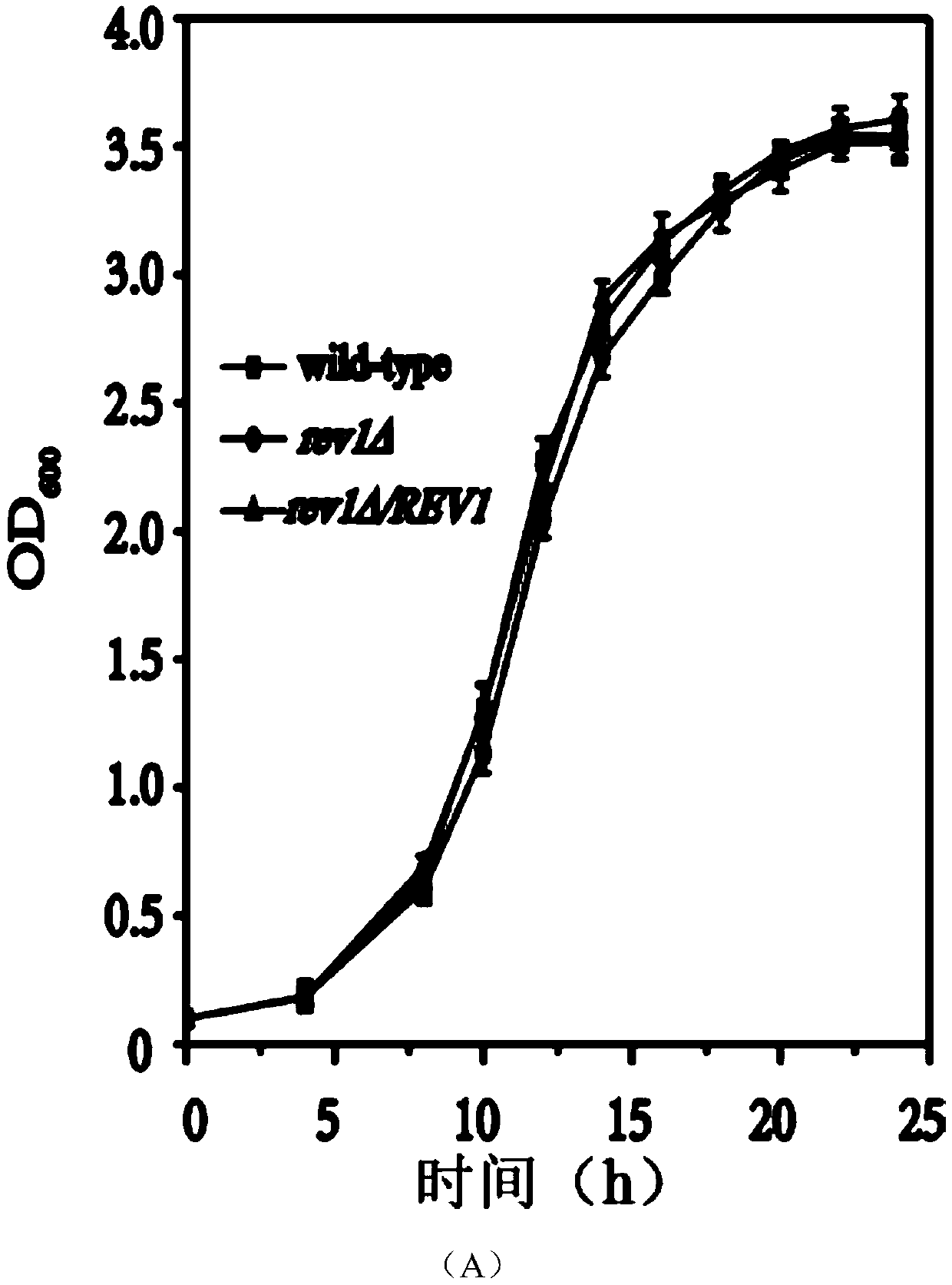Method for regulating saccharomyces cerevisiae oxygen stress through Y-family polymerase Rev1
A Saccharomyces cerevisiae and gene technology, applied in the field of bioengineering, can solve problems such as protein oxidative damage, yeast toxicity, and increased ROS level, and achieve the effect of improving viability and improving the ability
- Summary
- Abstract
- Description
- Claims
- Application Information
AI Technical Summary
Problems solved by technology
Method used
Image
Examples
Embodiment 1
[0036] Example 1: Construction of deletion mutant strains
[0037] Using the wild-type Saccharomyces cerevisiae genome as a template, and using P1 / P2, P3 / P4, and P5 / P6 as primers, respectively, the left arm (L), histidine gene (M) and right arm of the gene to be knocked out were amplified. (R), the knockout frame REV1-LMR was constructed by fusion PCR ( figure 1 ). The correctly sequenced knockout frame was introduced into the starting strain Saccharomyces cerevisiae BY4741 by chemical transformation, the positive transformants were screened using the histidine tag gene, and the genome was extracted for PCR sequencing verification.
[0038] Table 1 Primer sequence list
[0039]
Embodiment 2
[0040] Embodiment 2: Construction of overexpression strain
[0041] Using the genome of Saccharomyces cerevisiae BY4741 as a template and P7 / P8 as primers to amplify the target gene REV1, digest the amplified product with the same restriction enzymes EcoRI and XhoI as the plasmid PY26, and connect the gene REV1 to PY26 by T4 ligase , Transcription and translation are initiated by the strong promoter GPD1, positive transformants are screened using the URA3 gene on the recombinant plasmid, and finally the plasmid is extracted for verification to obtain the overexpression strain Rev1Δ / REV1.
Embodiment 3
[0042] Embodiment 3: the mensuration of each bacterial strain growth performance
[0043] (1) Plate growth experiment: inoculate a single colony of the strain to be tested in 20 mL of YNB (0.67% YeastNitrogen Base without Amino Acids, 2% Glucose) liquid medium for overnight activation, then transfer to YNB medium and cultivate until After several phases, measure the bacterial concentration and adjust the bacterial suspension to OD 600 = 1.0, using this as the initial concentration, carry out 5 times of 10-fold gradient dilution, and sequentially plant 3 μ L of bacterial liquid on the corresponding solid YNB medium, cultivate at 30 ° C for 2-3 days, observe the growth of the bacteria and take pictures ( figure 2 ).
[0044] (2) Growth curve test: inoculate a single colony of the strain to be tested in 20 mL of YNB (0.67% YeastNitrogen Base without Amino Acids, 2% Glucose) liquid medium for overnight activation, and then transfer to the corresponding YNB liquid medium In, con...
PUM
 Login to View More
Login to View More Abstract
Description
Claims
Application Information
 Login to View More
Login to View More - R&D
- Intellectual Property
- Life Sciences
- Materials
- Tech Scout
- Unparalleled Data Quality
- Higher Quality Content
- 60% Fewer Hallucinations
Browse by: Latest US Patents, China's latest patents, Technical Efficacy Thesaurus, Application Domain, Technology Topic, Popular Technical Reports.
© 2025 PatSnap. All rights reserved.Legal|Privacy policy|Modern Slavery Act Transparency Statement|Sitemap|About US| Contact US: help@patsnap.com



